Which automaker this week said it’s done with diesels, worldwide?
And is a “battery EV” or a “plug-in EV” the one without a tailpipe?
This is our look back at the Week In Reverse—right here at Green Car Reports—for the week ending September 22, 2023.
In a first drive of the 2024 Kia EV9, in prototype form, Green Car Reports found this upcoming three-row electric SUV to be exactly what the market needs—as a standout versus smaller performance-oriented crossovers and other models its size likely bearing much higher price tags. With automaker-approved bidirectional charging due next year, too, it will be a trendsetter.
2025 Mini Countryman Electric
In product news, the Mini Countryman Electric is coming to the U.S. in fall 2024, Mini confirmed Monday. This will be the first time the crossover will be sold in America in electric form, although it’s unclear if the E and SE versions and their multiple ranges shown at this model’s debut a few weeks ago will arrive Stateside.
The Inflation Reduction Act and Biden EV policy—and especially the disadvantage they place on companies seeking to import EVs—has spurred Hyundai to rush plans to get its Georgia EV “Metaplant” humming earlier. Based on comments made by Hyundai’s top U.S. executive, it’s now aiming for Georgia-made Hyundai EVs in fall 2024.
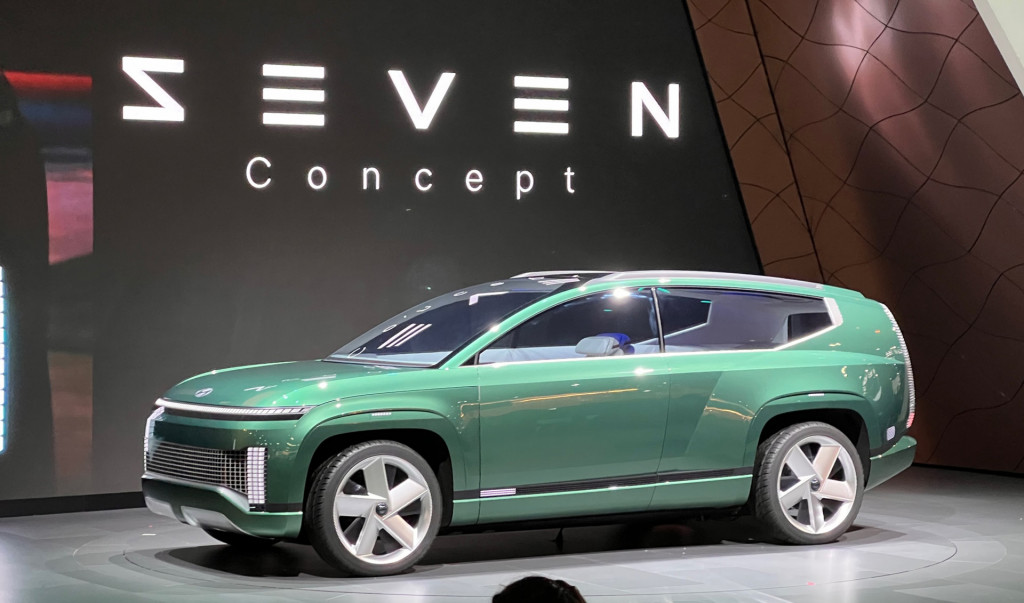
Hyundai Seven concept – 2021 Los Angeles Auto Show
Maserati is due to get a pair of fully electric models soon, and a supporting Maserati charging ecosystem is taking form. That includes preparing its dealerships with chargers, and backing drivers with charge-finding and route-planning assistance. It’s fair to say the brand’s era of electric false starts is history.
Jaguar Land Rover has confirmed that future Jaguar EVs will have the Tesla NACS port and allow access to Tesla Supercharger stations. While those models are due in 2025, expect Supercharger access sooner than that for I-Pace EVs with an adapter. Oddly, this doesn’t extend to Land Rover, the company confirmed to Green Car Reports—but it’s hard to imagine why the two brands wouldn’t use the same charge-port standard.
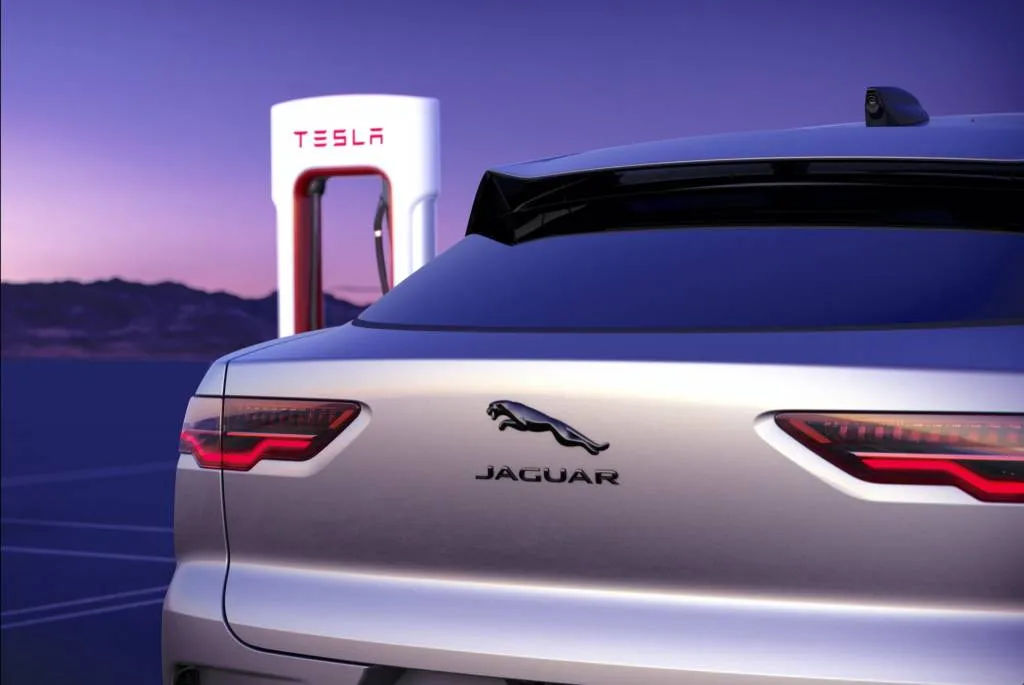
Jaguar I-Pace and Tesla Supercharger station
The Audi Q4 E-Tron is getting increased range, plus faster charging, more power, and a sportier tune, the automaker announced Thursday—for Europe. While Audi hasn’t yet confirmed any of these changes for the U.S., based on how Audi has introduced improvements to its larger E-Tron models they’re likely for 2025.
Leasing the Tesla Model 3 is a popular option—so popular that the Model 3 has earned a spot among the top 10 most leased vehicles. It’s not only the first time an EV has made the list as compiled by credit and financial analysis firm Experian; it’s also the only model on the list for which it effectively costs more to lease than to buy based on Experian’s calculations.
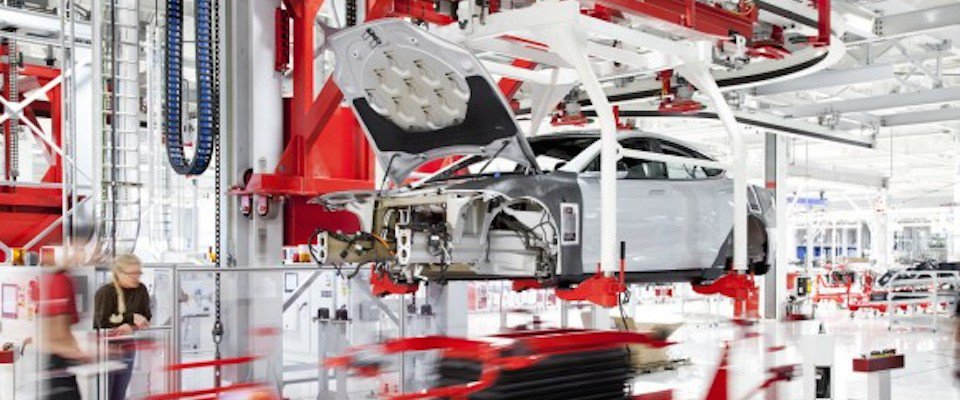
Tesla Motors production line for Tesla Model S, Fremont, California
And as of this past week, Tesla has made 5 million EVs globally. That’s the most EVs of any automaker in the world, and the growth has been, as Elon Musk has claimed, exponential. Now with so many charging agreements centered around the Supercharger network, will a version of the same happen to the American charging landscape?
The Dodge Hornet R/T and Alfa Romeo Tonale plug-in hybrids have been recalled over the possibility of loose battery cables—potentially leading to fires. The recall covers essentially all of these Italian-made PHEVs built so far, and the automaker says that they should be parked outside and away from structures until the recall work is done.

2024 Dodge Hornet R/T
The White House announced last week the formation of a new $100M program, drawing from infrastructure law funding, to replace unreliable EV chargers. The program will lead to the replacement of thousands of chargers that, according to federal data, simply don’t work.
Hot weather can degrade EV batteries, much more than cold weather, underscores the battery-health firm Recurrent in a new data-informed analysis. As Green Car Reports has cautioned in the past, stay away from those hot parking lots, and don’t be too fazed by the range loss you see in the winter.
Research presented earlier this week by the Rocky Mountain Institute has led to a revised forecast from the organization—that EV sales will top two-thirds of global car sales by 2030. Credit the acceleration of EV sales in “late-adopting” countries with robust new-car sales.
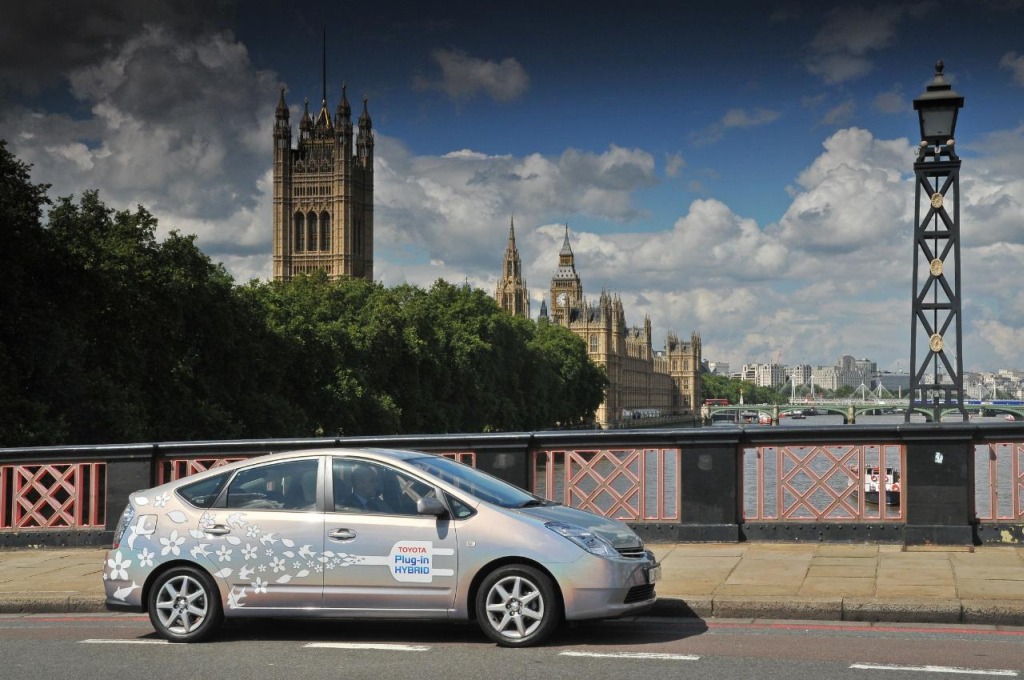
Toyota Prius Plug-In Hybrid prototype in London, U.K.
The U.K. is likely to delay its policy banning non-plug-in gas and diesel models from 2030 to 2035. That’s irking not only environmental interests but automakers, who have revamped manufacturing plans in Britain around the policy.
China has updated its national EV charging standard, called ChaoJi. Now allowing up to 1.2 megawatts and claiming to be cross-compatible with other fast-charging standards, the standard represents a continued evolution and safety improvements.
Volvo has announced that it’s done making diesel vehicles—including in Europe where, until recently, diesels outsold plug-in vehicles. Meanwhile, many other European brands plan to sell diesels for a decade or more, as they align with a future around EVs.
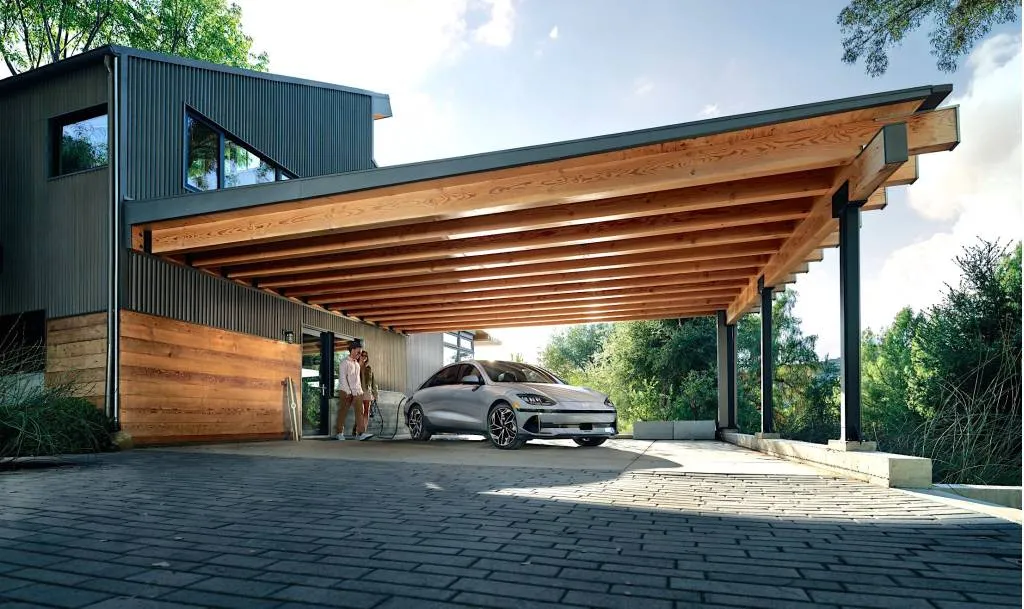
Hyundai Ioniq 6 with ChargePoint charger
Do you have a home charger yet? Those who purchase or lease a new Hyundai Ioniq 5, Ioniq 6, or Kona Electric through October 31 can get a free home charger—plus up to $600 to cover installation. It’s offered through the company’s Hyundai Home service, which aggregates charging-station possibilities and helps frame solar and energy storage options.
And Toyota earlier this week introduced a bit of a puzzle: an “Electrified Diversified” marketing campaign that appears to blur the differences between its hybrids, plug-in hybrids, and EVs.
_______________________________________
